
|

|
Forum Index : Electronics : Restoring the Astor Mickey Mouse
| Author | Message | ||||
| Gizmo Admin Group Joined: 05/06/2004 Location: AustraliaPosts: 5012 |
I'm always on the look out for valve radios, and have about 20 in my collections. Recently I've started collecting the early transistor radio's to, and even a few old TV's. Early this year I picked up this little radio at a auto swap meet. It was mixed up with some car parts, and I grabbed it because I thought it looked nice, and had a mickey mouse figure in the dial and on the back. The case was in perfect condition, it seamed intact, and I paid $15 for it. 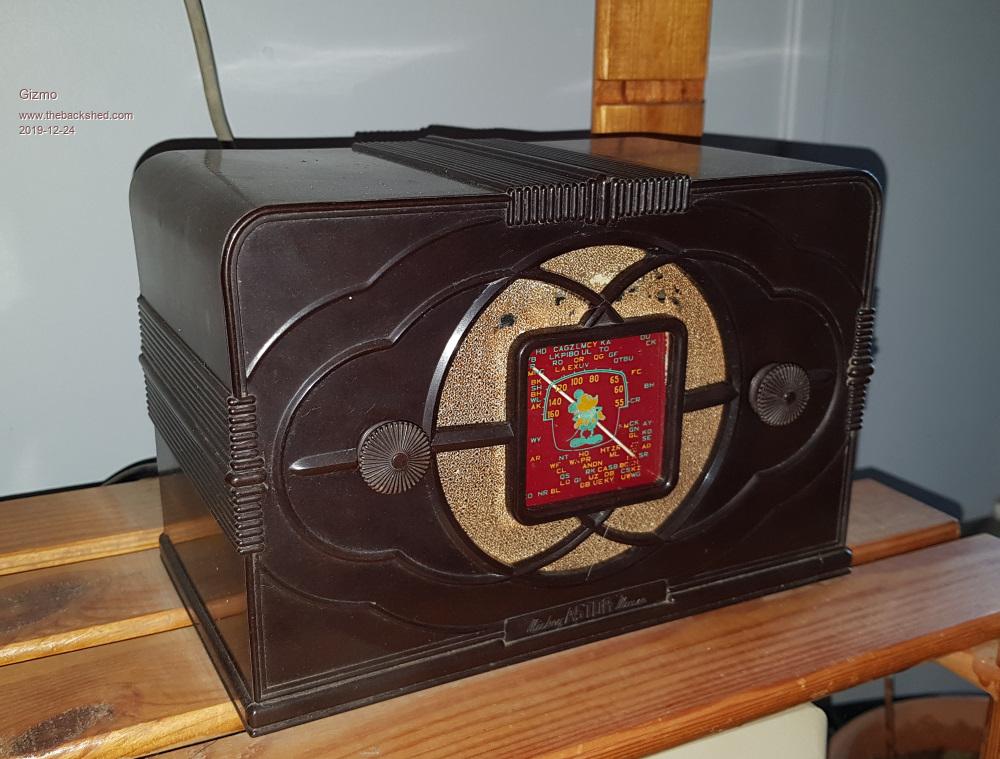 Now I'll just give the radio collector readers a moment to pick up their jaws and catch their breath. I've since discovered its a highly collectible piece. Made by Astor in Australia in the late 1930's, it was called the Mickey Mouse, a 4 valve mains powered radio. When Disney got wind of it, Astor had to drop the Micky Mouse character off the radio dial, so finding one with the character is not very common. 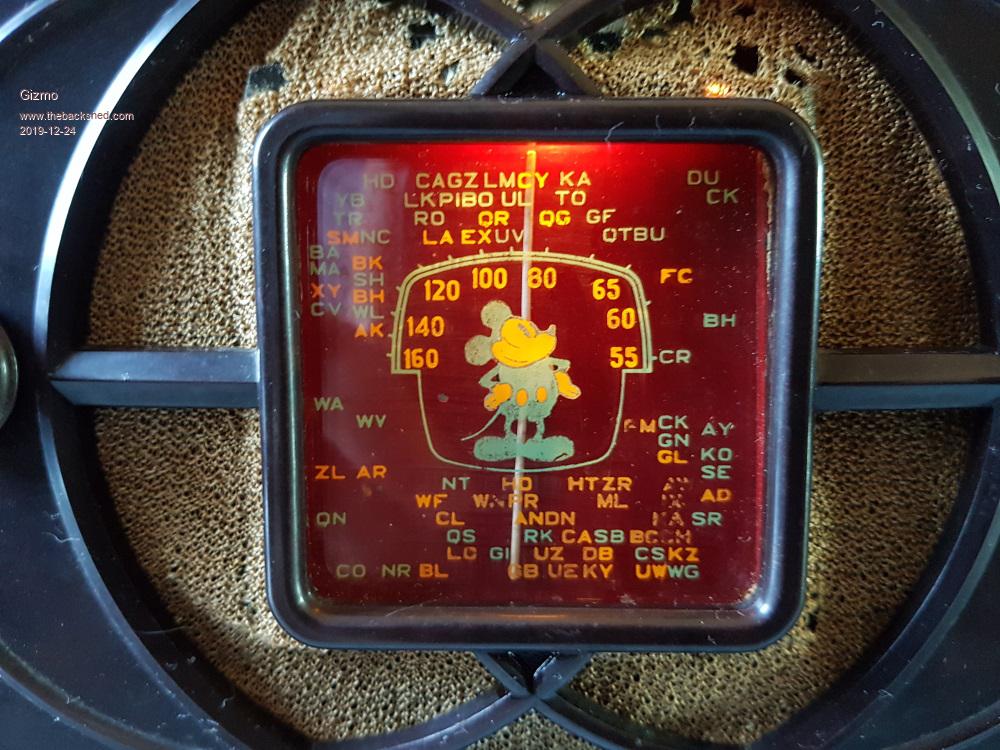 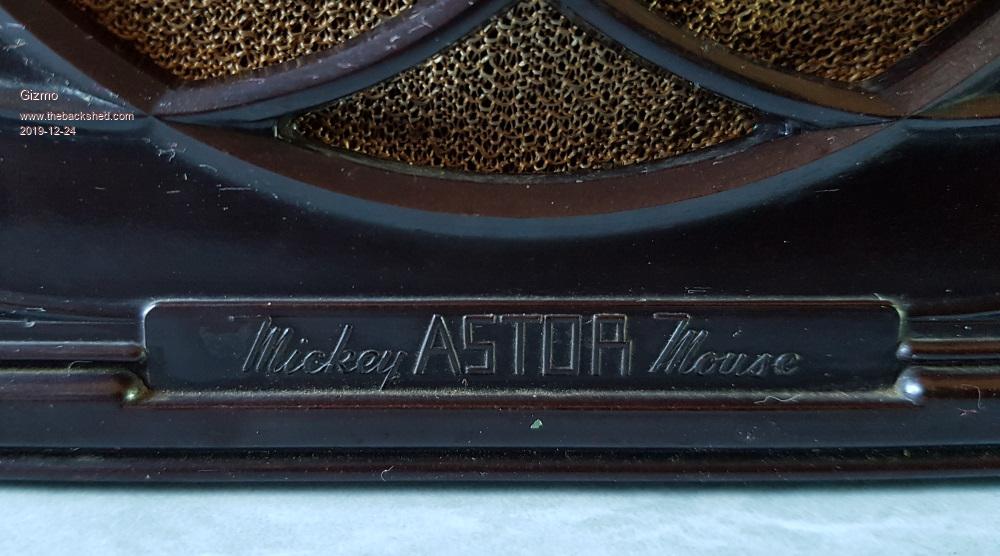 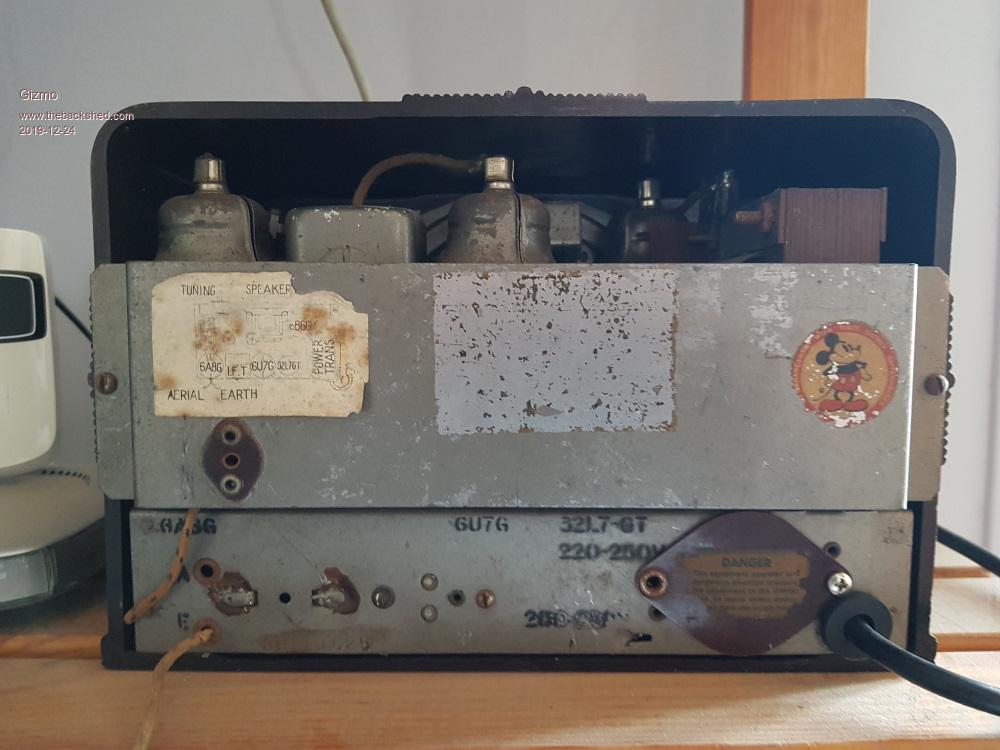 I decided to see if it could work, and if so, do a lead and capacitor replacement, bit of a tidy up, but basically leave it as original as I could. First thing, once the chassis was removed from the case, was to screw on a couple of timber sides so I could flip the radio over and not damage the valves. 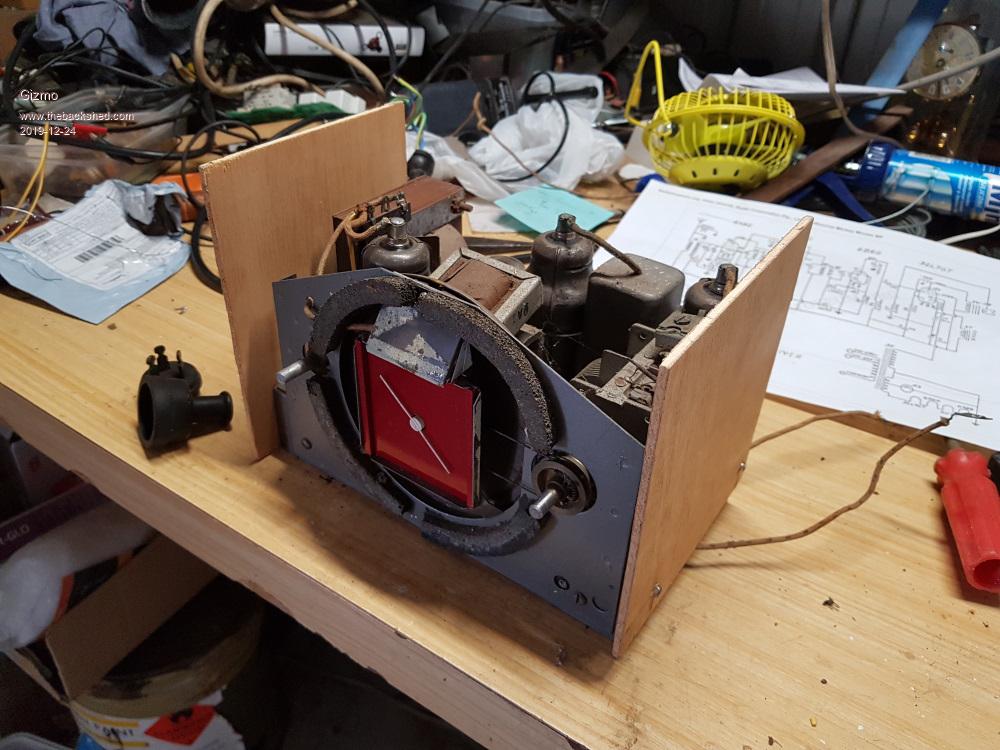 The original cloth power lead was totally serviceable, with exposed wires. The transformer tested ok, so I soldered on a temporary power lead and powered it up. Lots of hum in the speaker once the valves warmed up, so replaced the mains filter caps, and it worked, mostly. Signal was low and it was way off tune. I downloaded a circuit diagram and ordered replacement caps from RS Components. 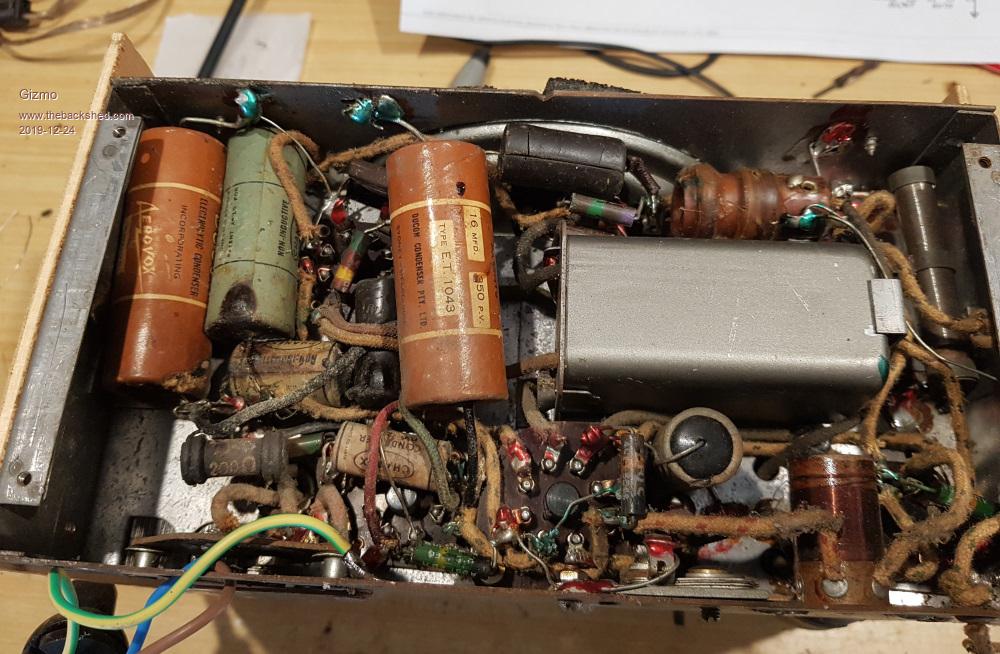 Once the caps arrived I carefully replaced the old with new, fitted a new power lead, replaced the tuning dial light bulb. I couldnt find any cloth covered power cables locally, and didnt want to sacrifice my clothes iron, so used a black power lead with the original "Clipsal" power plug. 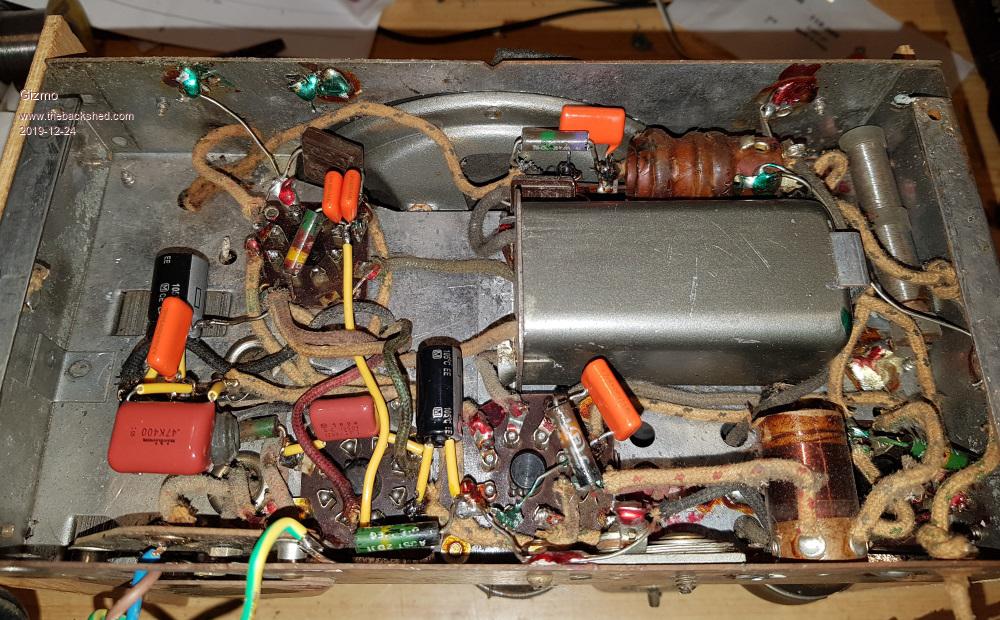 With new caps the radio performed perfectly. Signal was nice and clear. This radio has a steel plate screwed to the back of the bakelite case, thats connected to the aerial wire, to act as a built in aerial. This worked OK, but with a aerial wire plugged in, the performance was brilliant and I didnt feel the need to tune the IF stages. This is the back with the aerial plate removed. 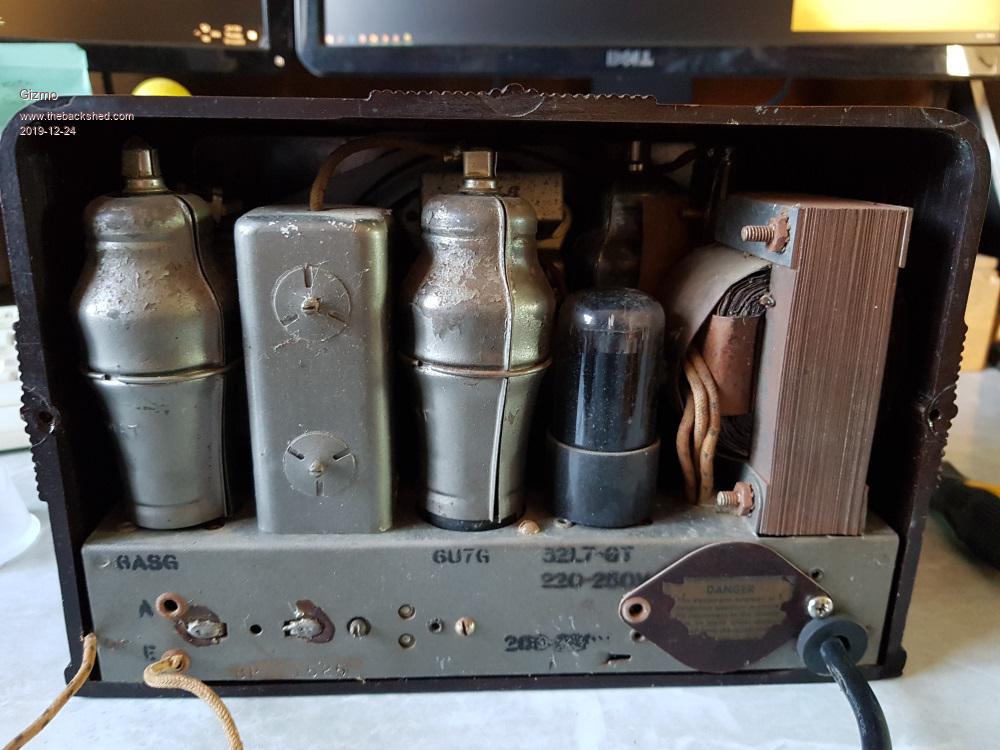 The circuit is interesting, its only running at 110v, and the speaker uses a electromagnet, part of the DC filter circuit, typical of this era. The valve heaters are connected in series, and one valve acts both as the final audio stage and supply rectifier. The build quality was not good, looked like it was built on a Friday. I decided to leave the original speaker cloth in place, holes and all. I'll keep the removed capacitors and a off cut of the original power lead with the radio in case I ever decide to sell it, but for now it will sit on a shelf and be part of my collection. Next up I have a couple Kriesler 1960's radios to fix. Glenn Edited 2019-12-24 10:50 by Gizmo The best time to plant a tree was twenty years ago, the second best time is right now. JAQ |
||||
| Davo99 Guru Joined: 03/06/2019 Location: AustraliaPosts: 1577 |
What an awesome old set! I'm not into radios as such but if I had seen that, I would have grabbed it too. The mickey mouse on it would have made me think it was worth something straight off but even if it wasn't, I'd find a nice place for it to be admired at home. The before and afters of the cap replacement and clean up sure is telling of the difference in modern electronics and old. My Grandparents had an Old HMV set similar to that one, an off white coloured thing with a red face. Seen plenty of them around. That think always had a fantastic sound. When it got relegated up the shed, I disconnected the original speaker and wired a a couple of car speakers I sealed in cardboard boxes. That thing had some grunt and of course while only being mono, put out some great sound quality that always astonished me. Unfortunately a feral cat that got in the shed did a runner trying to get away from me when I walked in there one day and pushed the thing of the cupboard it was up on and it hit the floor and smashed to pieces. Always sad when I think of that. Not only was it a real nice old radio, it was my grandparents that they always took pride in when I was a kid. Great score you got there and great that you got it working so well. I would leave the original cloth as well. That adds Character and pays tribute to the age of the thing. As they say, it's a feature not a fault. |
||||
| Warpspeed Guru Joined: 09/08/2007 Location: AustraliaPosts: 4406 |
Oh golly that brings back memories... Body end dot resistors, valves with grid caps, tuning capacitor driven by string, and those big old orange electrolytics. Real nostalgia stuff. That is a real collectors item, and can only appreciate in value. Cheers, Tony. |
||||